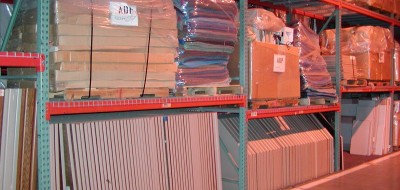You’ve come to love your plants that have grown from a small seed into a blossoming masterpiece while in your care, and moving without them is simply out of the question. While you will have to find alternative transportation for your plants, as they are not allowed to be transported in a moving truck, the rest is actually fairly easy.
Start With a List of Plant Details
Take an inventory of all of your plants that will be making the move with you. For each, write down their dormant period (plant cycle where they dry out). During this period, the plants will go into a type of hibernation that slows down the plants’ growth, metabolism, and energy consumption. Moving plants while they’re in their dormant cycle, which is typically between October and February for most plants, will decrease the stress they’re under during the transportation.
Add a Layer of Mulch
Mulch is an excellent material that provides your plants with an abundance of nutrients that help them survive. So, add a layer on top of the soil of each plant prior to the move to give your plants some extra care that’ll help them withstand the environmental changes and increased stress they’ll be put under during the moving process.
Research Climate Requirements
Depending on where you’re moving to, the climate may be different than what your plants are used to. If this is the case, you’ll want to do some extra research to make sure your plants can grow in that specific climate area. If not, they will not survive upon arrival and you may want to give them to a friend or family member instead.
Arrange Alternative Transportation
Plants cannot be moved in a moving truck and you will have to make alternative arrangements for them to be moved to your new home. This can be as simple as transporting them in your own vehicle. However, if you do not drive and rely on public transportation, you will want to plan ahead and see which options are best for traveling with plants.
Careful Placement in the Car
With transportation in mind, you’ll also want to consider the placement of your plants in the vehicle. If you’re moving only a short distance, they can be placed anywhere that will prevent them from falling over and spilling soil everything. However, if you are moving houseplants a long distance, you will want to strategically place each plant in an area that provides them with the sunlight or shade they need to thrive.
Keep Your Plants Away from Cardboard
It’s common practice to put all of the prepared and packed items in one location of a home, as it makes it easier to move them into the moving truck and personal vehicles. However, if you place your plants too close to cardboard and for longer periods of time, the cardboard may become moist which can weaken the structure and even cause damage to the items being stored inside.
So, keep your plants waiting elsewhere until moving day approaches. This will also help you remember that they cannot be placed on the moving truck with everything else.
Don’t Forget to Stop and Water the Plants
If you’re embarking on a long-distance move, it’s important to remember to stop and water your plants. Otherwise, you’ll want to place water granules in the pots to keep your plants hydrated throughout the moving process.
Although your plants cannot be transported in a moving truck, professional movers can help you properly prepare and pack them for the big day. Speak with a specialist at BMS Moving & Storage today to unleash the power of the pros.






